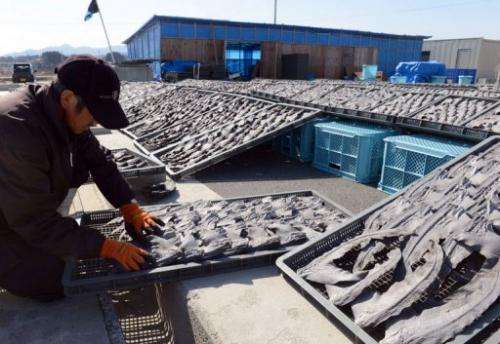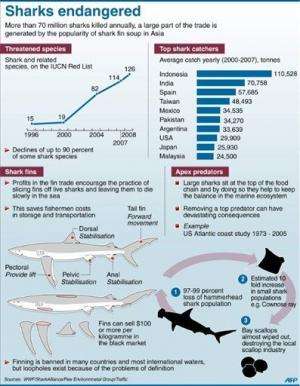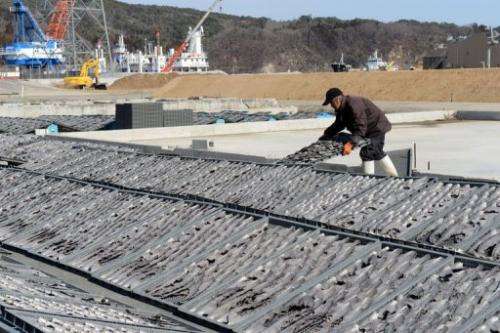Japan tsunami town on watch for shark deal

An international agreement to protect sharks could spell trouble for one tsunami-wrecked port in Japan as it struggles back to its feet two years after being swept away, locals say.
Shinichi Sato said his shark processing business in Kesennuma has only just re-started, but he fears a global vote to regulate trade in several species of the predator could put paid to its recovery.
"We don't just take fins and dump the fish in the way now criticised by the world," Sato told AFP on Tuesday as he laid out the boomerang-shape fins to dry in the sun.
"We make very good use of the resources."
Kesennuma has been Japan's sharkfin hub since the 19th century, and once dealt with 90 percent of all shark landed in the country.

As well as the fins, which are used to make sharkfin soup or stew, a highly prized delicacy in China and Japan, other parts are used in the production of supplements such as liver oil, while the skin is used as leather.
Each fishing boat usually returns with about 30 tons of blue sharks. The fins make up around a tenth of this weight. The remaining meat is used in fish sausages, Sato said.
But much of the town, including the processing factories, was swept away when the powerful tsunami of March 2011 crashed ashore, killing almost 19,000 people and making tens of thousands homeless.
Sato, 39, who has worked in shark processing for a decade, said his business was so severely damaged that it has recovered less than 20 percent of what it was before the catastrophe, the second anniversary of which fell on Monday.
On the same day a major wildlife conference in Bangkok, the 178-member Convention on International Trade in Endangered Species (CITES), voted to restrict cross-border trade in the oceanic whitetip, the porbeagle and three types of hammerheads, as well as the manta ray.
Conservationists argue that "finning"—slicing the valuable fins from live sharks—is inhumane, as the rest of the animal is typically dumped back into the ocean where it bleeds slowly to death.

Activists hailed agreement in Bangkok as a major step forward in protecting endangered species.
But for Sato, the mood abroad could spell trouble, even though he does not use any of the species covered by the deal.
"About 90 percent of sharks we get here are blue sharks, different from those discussed at the wildlife conference," Sato said. "But I am worried the CITES debate may trigger a price collapse for shark fins."
(c) 2013 AFP



















